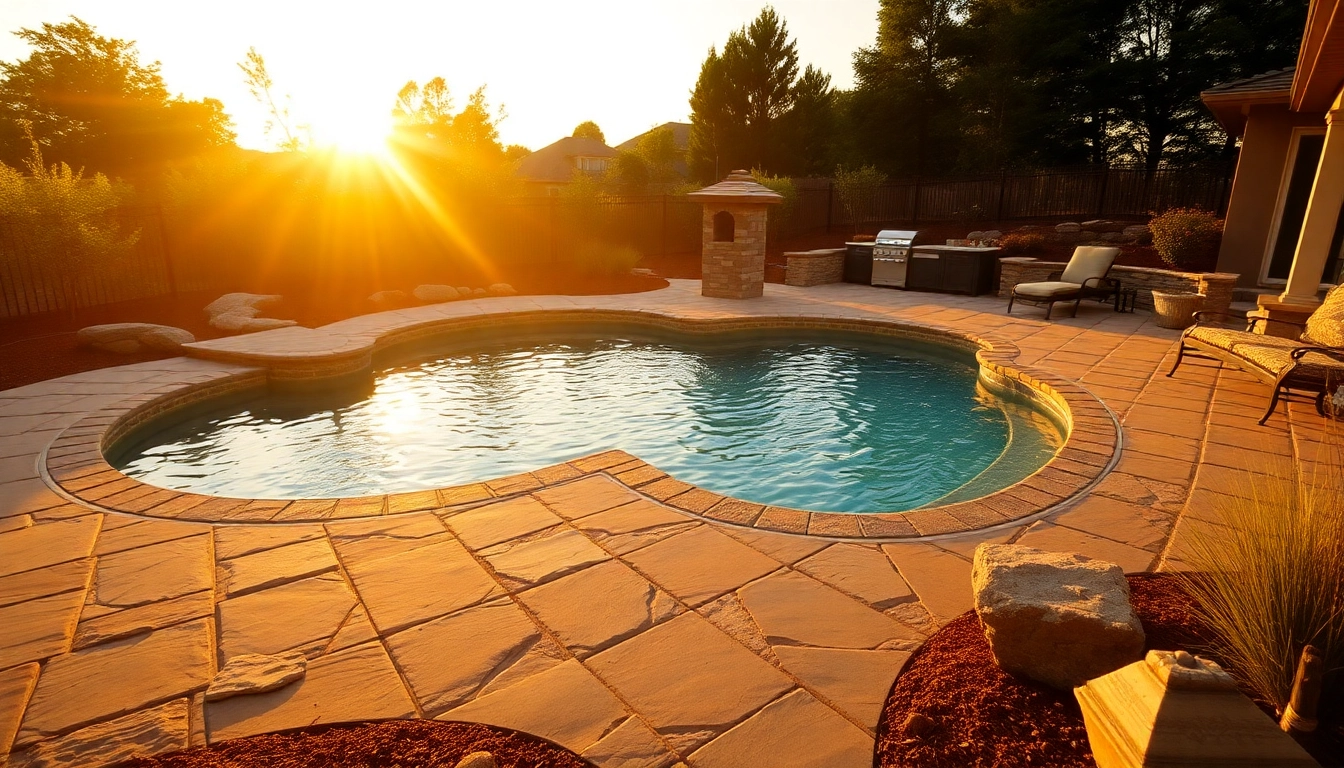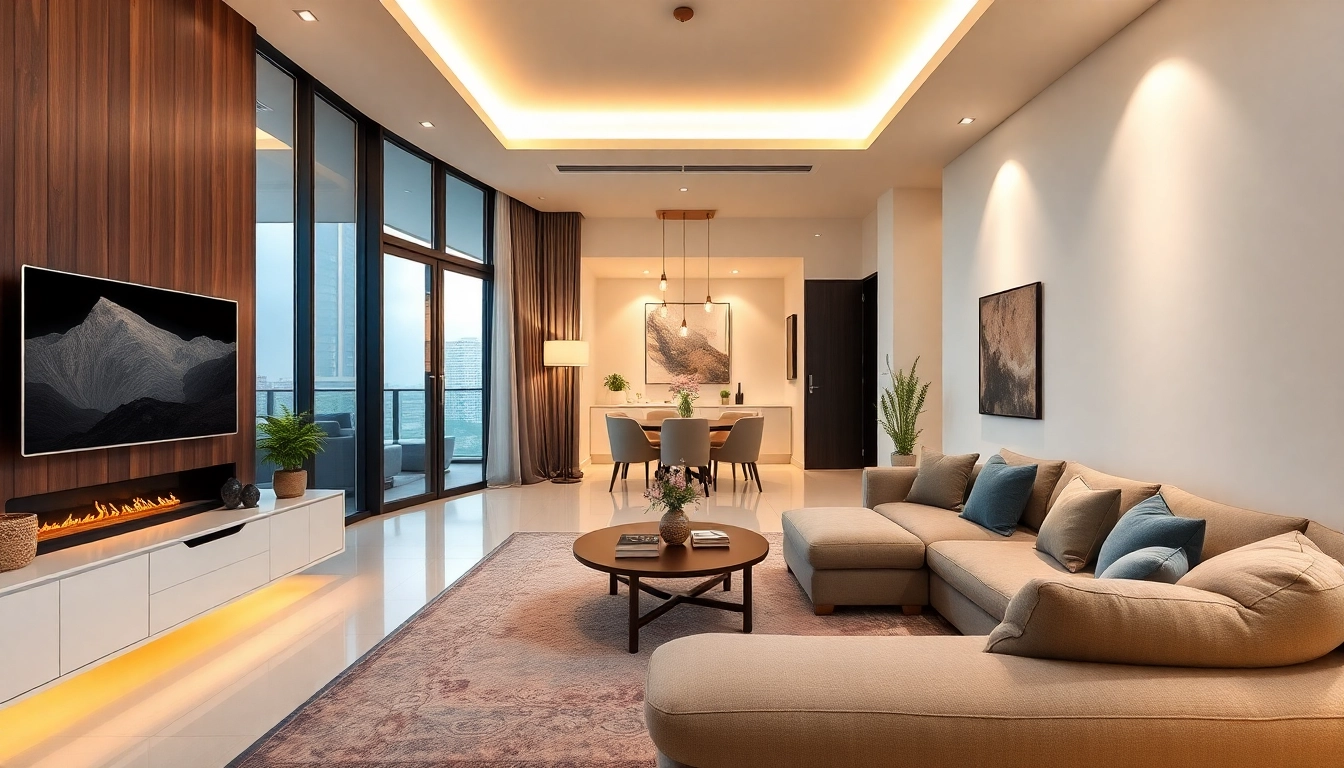Understanding Hardscapes & Pools
Hardscapes and pools are essential aspects of outdoor design, transforming any backyard into a luxurious oasis. The blend of solid surfaces with water elements creates not only aesthetic appeal but also functional spaces for relaxation and entertainment. As homeowners increasingly seek to enhance their outdoor living spaces, understanding the intricate relationship between hardscapes and pools is crucial. This comprehensive guide dives into the definitions, benefits, design considerations, common pitfalls, innovative ideas, and tips for successful implementation in hardscape and pool projects. For professional insights and services, consider exploring Hardscapes & Pools.
What Are Hardscapes?
Hardscaping refers to the non-plant elements of landscape design. This includes materials such as stone, concrete, brick, and gravel that create structural features in an outdoor space. Hardscapes integrate functionality with artistry, enhancing the usability of areas around gardens, patios, and pools.
Types of Pools and Their Integration
Various pool types can complement hardscape elements, enhancing their overall appeal. Here are a few common types:
- In-ground Pools: These are permanent structures, usually built using concrete, fiberglass, or vinyl. Their flexibility in design allows for seamless integration with surrounding hardscapes.
- Above-ground Pools: Often more cost-effective, these pools can still blend well with hardscapes if designed thoughtfully. They can be surrounded by decks and customized landscaping.
- Plunge Pools: Smaller than traditional pools, plunge pools are ideal for limited spaces and can feature intricate hardscapes that enhance their appeal.
- Infinity Pools: Featuring an edge that creates a stunning visual illusion of depth, infinity pools can elevate outdoor aesthetics, particularly when paired with stone or textured hardscapes.
Benefits of Hardscaping Around Pools
Integrating hardscapes around pools offers numerous advantages:
- Enhanced Safety: Surrounding pools with durable materials can prevent slips and falls, providing a secure environment for children and pets.
- Defined Spaces: Hardscapes help delineate areas for relaxation, dining, or entertaining, allowing for organized outdoor living.
- Easy Maintenance: Hardscaping reduces the area that needs mowing or watering, cutting down on maintenance time and costs.
- Aesthetic Appeal: A well-designed hardscape enhances the beauty of a pool area, creating a cohesive flow that appeals to the eye.
Design Considerations for Hardscapes & Pools
Choosing the Right Materials
The selection of materials for hardscapes is critical in achieving the desired aesthetic and functional outcomes. Here are some popular choices:
- Natural Stone: Durable and timeless, natural stone adds elegance to any poolside area.
- Concrete Pavers: These versatile materials come in various shapes, colors, and textures, allowing for customization while remaining practical.
- Wood Decking: Bringing a warm, inviting look, wood decks can surround pools for a cozy feel but require more maintenance.
Color Schemes and Aesthetic Appeal
The color palette of the hardscapes in relation to the pool’s hue significantly impacts overall aesthetics. Neutral tones can create a calming effect, while bolder colors can invigorate the space. Consider these approaches:
- Harmonious Blends: Choose colors that reflect the pool’s water hue, creating a seamless transition.
- Contrasting Elements: Use contrasting materials to make both the hardscapes and the pool stand out, adding dimension to the area.
- Textural Variety: Incorporating different textures can enhance visual interest while allowing for practical benefits such as slip resistance.
Sustainability in Pool and Hardscape Design
Sustainability is becoming increasingly important in outdoor design. Consider implementing eco-friendly practices such as:
- Permeable Pavers: Allow water to flow through, reducing runoff and allowing for groundwater replenishment.
- Solar Pool Heaters: Utilize renewable energy to maintain pool temperatures efficiently.
- Native Plants: Integrating local flora can minimize water usage and promote biodiversity in landscaping.
Common Pitfalls in Hardscapes & Pools Projects
Budgeting Wisely for Your Project
Proper budgeting is pivotal in avoiding overspending on hardscaping and pool projects. Consider the following steps:
- Establish a Clear Budget: Define what you can afford, including both hardscaping and pool construction costs.
- Prioritize Features: Identify essential elements versus optional upgrades to stay within your financial limits.
- Account for Maintenance Costs: Consider future maintenance expenses in your budget to avoid financial strain later on.
Avoiding Design Mistakes
Design pitfalls can derail your project. Common mistakes include:
- Ignoring Local Regulations: Check zoning laws and HOA requirements before finalizing designs.
- Underestimating Scale: Always visualize the proportions of the hardscapes and pool in relation to existing structures to avoid overcrowding.
- Neglecting Functionality: A beautiful space must also serve its intended purpose; ensure your design allows for comfortable movement and usability around the pool.
Maintaining Your Hardscapes and Pools
Maintenance is essential to prolong the lifespan and beauty of hardscapes and pools. Key maintenance tasks include:
- Regular Cleaning: Keep hardscape surfaces clean to prevent buildup of dirt and algae around the pool.
- Routine Inspections: Check for cracks or wear in hardscaping materials regularly and address minor issues before they escalate.
- Seasonal Care: In colder climates, ensure proper winterization of pools and associated structures to prevent damage.
Innovative Ideas for Hardscapes & Pools
Unique Pool Designs to Consider
Creativity can significantly enhance your pool’s appeal. Some innovative ideas include:
- Geometric Shapes: Go beyond typical rectangular pools and explore shapes that add interest to the landscape.
- Swim-Up Bars: Integrate a bar directly in the pool, allowing guests to socialize while enjoying refreshments.
- Water Features: Incorporate waterfalls, fountains, or vanishing edges to add a luxurious touch.
Hardscape Features to Elevate Your Space
Elevate your outdoor space with unique hardscape elements:
- Built-In Seating: Create stone walls or benches to incorporate comfortable seating while saving space.
- Fire Pits: A fire pit can extend outdoor enjoyment into cooler evenings and serve as a rustic centerpiece.
- Lighting: Use ambient and task lighting to create a magical atmosphere around your pool and hardscapes, enhancing usability at night.
Incorporating Technology in Pool Design
Technology can enhance the functionality of pools:
- Smart Pool Controls: Automated systems can control water temperature, lighting, and cleaning schedules remotely.
- LED Lighting: Programmable LED lighting can create various moods and effects, enhancing nighttime beauty.
- Safety Features: Advanced pool alarms or automatic covers will provide an additional layer of safety for children and pets.
Expert Tips for Successful Hardscapes & Pools Projects
Hiring the Right Professionals
Selecting experienced professionals can make a significant difference in project outcomes. Look for:
- Qualified Contractors: Ensure the contractor has experience with hardscaping and pool installation.
- Positive Reviews: Seeking feedback from previous clients can guide your selection process.
- Portfolio Samples: Reviewing a contractor’s past work will help you gauge their style and capabilities.
Planning and Executing Your Vision
A solid plan is fundamental to a successful project:
- Consult with Designers: Work with landscape architects or designers to finalize your vision and ideal layout.
- Timeline Development: Create a realistic timeline for project milestones to keep contractors accountable.
- Flexibility: Be open to adjustments for unexpected challenges during construction without deviating from your vision.
Maximizing Value and Enjoyment
Ultimately, the goal of your landscaping project is to enjoy your outdoor space. To maximize that experience:
- Personalization: Infuse personal style and preferences into the design for a truly unique space.
- Outdoor Living Areas: Add outdoor kitchens or lounges to convert the area into a multifunctional space.
- Community Engagement: Consider features that encourage family gatherings and socializing, enhancing outdoor enjoyment.



